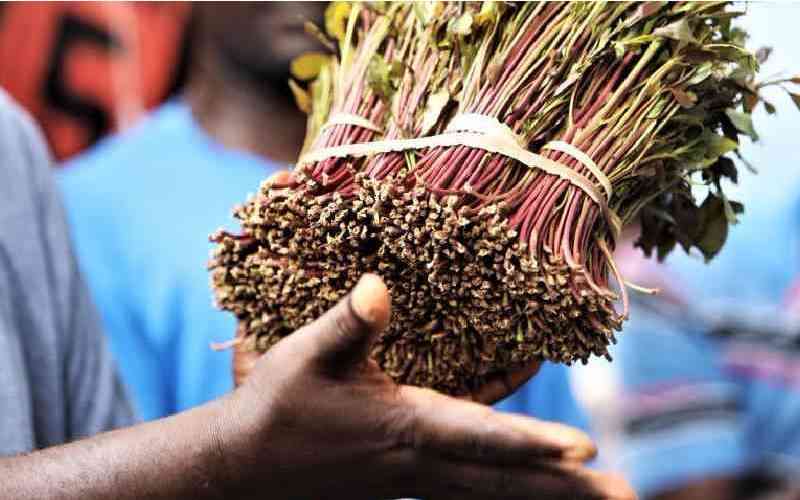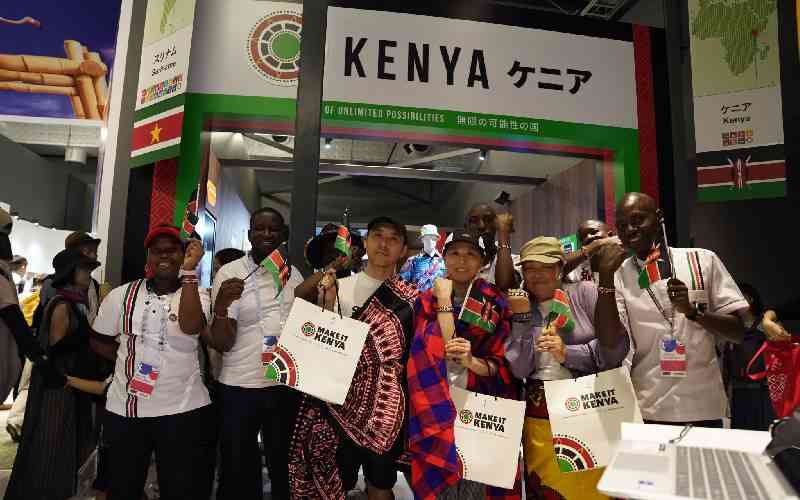
Kenyan miraa, also known as khat, has been cleared for export to Djibouti, marking a significant new market opportunity for farmers and traders of the lucrative stimulant crop.
The Agriculture and Food Authority (AFA) announced yesterday the development follows successful trade engagements between the two nations.
AFA Director General Bruno Linyiru said the market access was secured after a Kenyan trade mission visited Djibouti in October last year, followed by a reciprocal visit from a Djibouti delegation in November 2024.
"Djibouti has opened its market for Kenyan miraa, subject to regulatory compliance," Dr Linyiru said in a statement.
Exporters keen to tap into this new commercial opportunity must, however, adhere to Djibouti's import regulations, including obtaining necessary permits and meeting specific product standards.
Kenyan traders are also required to comply with regulations set by relevant Kenyan government institutions to ensure smooth export operations.
Djibouti, a nation of about one million people occupying an area of around 23,200 sq km, is a small yet crucial market, particularly for its East African neighbours like Kenya.
Strategically located in the Horn of Africa, north of Kenya and bordering Eritrea, Ethiopia, and Somalia, Djibouti serves as a vital maritime gateway.
With its direct access to the Gulf of Aden and the broader Indian Ocean, it acts as a significant entry and exit point for trade in the Horn of Africa and the wider East African region.
This makes it a key partner for landlocked countries and a complementary trade route for coastal nations like Kenya.
AFA highlighted this development as a "major milestone in diversifying Kenya’s miraa export markets."
The agency encouraged traders to "take advantage of this new commercial opportunity and link up with buyers in Djibouti for business engagements."
Miraa, a mild stimulant chewed by many in the Horn of Africa and Arabian Peninsula, has been a significant cash crop for some regions in Kenya, particularly Meru County.
Stay informed. Subscribe to our newsletter
However, the industry has faced challenges due to market closures in other traditional destinations.
The opening of the Djibouti market is seen to provide a welcome boost for Kenyan miraa farmers and traders seeking new avenues for their produce.
Kenya's miraa (khat) exports reached 4.777 metric tonnes (MT) in 2024, with Somalia maintaining its position as the primary destination for the stimulant crop, according to recent trade data.
Beyond Somalia, Kenyan miraa also found markets in Sierra Leone, the Democratic Republic of Congo (DRC), Angola, Mozambique, and Israel, indicating a continued, albeit limited, diversification of export destinations for the commodity.
This export landscape coincides with significant internal developments regarding miraa pricing.
The Miraa Pricing Formula Committee, established under regulation 29 of the Crops (Miraa) Regulations, 2023, is tasked with advising the industry on the pricing of Kenyan miraa. In fulfilling its duties, the committee reviews production data, cost of supply, and demand, among other parameters, to guide the sub-sector.
The Committee convened on February 13, 2025, and, following submissions from farmers and traders, agreed on new pricing structures. Grade 1 miraa is now priced at Sh1,300 per kilogramme, Grade 2 at Sh700 per kilo, and Alele grade at Sh1,000 per kilogramme.
These new negotiated prices, which represent a significant adjustment from previous rates (Sh700, Sh350, and Sh500 respectively), took effect immediately, according to the committee's announcement.







